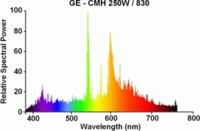
Photo from wikipedia
A theoretical study of the double-differential cross sections (DDCS) for ejection of electron from hydrogen atom in ground state by the impact of $$\hbox {C}^{6+}$$ C 6 + ion with… Click to show full abstract
A theoretical study of the double-differential cross sections (DDCS) for ejection of electron from hydrogen atom in ground state by the impact of $$\hbox {C}^{6+}$$ C 6 + ion with energy values 1 and 2.5 MeV/amu is presented. For the final state, we use a continuum distorted wave that contains the product of two Coulomb distortions due to the projectile–electron and target–electron Coulombic interactions for which it is called the two-Coulomb-wave (2CW) model. In this paper, the energy and angular distributions of DDCS for electron emission from atomic hydrogen have been investigated. The ejected electrons are influenced by the combined fields of the target and the projectile ion. Comprehensive comparisons are made between the three-Coulomb-wave model (Jana et al. in Eur Phys J D 66:243, 2012 ) and the present 2CW model. The emitted electron, the incident projectile ion and the residual ion are considered to be in the same plane. It is found that the two-centre effect has a major influence on the observed forward–backward angular asymmetry in the angular distribution of electron emission spectra. The region of the binary encounter peak is analysed in detail. The present computed results have been compared with the available experimental results as well as other theoretical calculations based on the first Born approximation and the continuum distorted wave eikonal initial state approximation. Moreover, the present computed results are in better agreement with the available experimental data for electron emission cross sections.
Journal Title: Indian Journal of Physics
Year Published: 2019
Link to full text (if available)
Share on Social Media: Sign Up to like & get
recommendations!